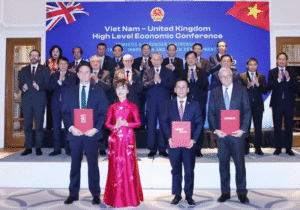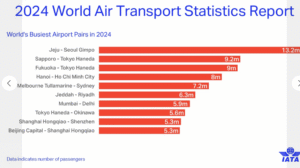China Vice-Minister of Foreign Affairs Fu Ying on Bhutan, Nepal

Interview—————
“Closer ties with Bhutan, Nepal”
By Fu Ying, Vice- Minister of Foreign Affairs of People’s Republic of China
Vice-Minister of Foreign Affairs Fu Ying, who has recently visited Bhutan and Nepal, talks with China Daily about her visits to these two South Asian countries.
You have recently visited Bhutan and Nepal. The Chinese people have a great deal of interest in the two countries. Could you share with us your impressions?
Yes, I have just been to Thimphu to attend the China-Bhutan boundary talks and co-hosted diplomatic consultations in Kathmandu. The visits were productive and enjoyable. Bhutan and Nepal are both situated at the southern slope of the Himalaya Mountains and are endowed with unique geographical features and rich cultural heritage.
My first stop was in Paro, which has the only international airport in Bhutan. The runway lies between the high mountains, and you have to admire the skillful way the pilot navigated the plane around mountains peaks. The drive from Paro to Thimphu was an enchanting experience. We feasted our eyes on the natural scenery all around us as well as the colorfully painted traditional wooden farmhouses that looked like they were sleeping in the green valleys. The children walking in the streets were all in traditional-style uniforms and well-mannered. It is easy to see why Bhutan ranked very high on the National Happiness Index in the world.
Now to Nepal, it’s my second visit, and I found the country a lot busier and livelier. There have been lots of political changes, and it’s remarkable that the overall economic progress has continued. I remember when sitting under a huge bodi tree as we waited for a delayed flight, a young Nepalese monk explained about the search for inner peace. The calm cultural atmosphere there was deeply touching.
Bhutan is the only neighbor with whom China has not established diplomatic relations. The boundary talks have been going on for years. Could you update us on the progress?
Yes, China-Bhutan boundary negotiations started in 1984. Over the years while the talks were going on, the two sides have maintained an effective discussion on building up understanding, trust and exchanges. Thanks to the agreements reached, we have also maintained peace and tranquility in the border areas.
This is the 20th round of talks, and I found my meetings friendly, substantive and constructive. Both sides were accommodating and forward-looking. China appreciates Bhutan’s positive attitude on its relations with China. We agreed to continue exchanging visits and gradually expanding cooperation in areas of common interest while advancing the boundary talks with patience.
My visit culminated in a call on the fourth king of Bhutan. I was deeply impressed by the former king’s knowledge and sharp insight on the affairs of the outside world. The meeting was warm, and we could sense the king’s wisdom and foresight. Small wonder he came up with the vision of building “Gross National Happiness”, which is attracting wider international attention.
Nepal as China’s neighbor is at an important juncture of its political transition. What is your view on China-Nepal relations? How has your visit helped deepen the relations?
China and Nepal have always enjoyed strong and healthy relations. To quote Prime Minister Bhattarai, ours is a “problem-free relationship”. For China, Nepal is a good neighbor, good partner and good friend. I reaffirmed China’s policy of noninterference in Nepal’s internal affairs, respect for Nepal’s independence, sovereignty, territorial integrity, and its people’s choice of development path. I also expressed our best hope that Nepal’s peace and constitution drafting process arrive at a successful conclusion.
The purpose of my visit was to follow up on the important visit to Nepal by Premier Wen Jiabao last January. China is committed to effectively implement the important agreements reached during the visit, including assistance programs, infrastructure projects and people-to-people exchanges. We highly appreciate Nepal’s firm commitment to the one-China policy and its position of not allowing any forces to use its territory for anti-China activities. I am glad that this policy is shared by all political parties.
The visit has also made me more confident about the future of China-Nepal trade and investment cooperation. We discussed many potential areas for cooperation. I noticed that Nepal’s traditional handicraft and its places of historic interest will prove very attractive for Chinese buyers and tourists.
The world is rapidly changing. Developing countries like China and Nepal need to work hard to maintain stability in order to pursue economic progress. We must grasp the opportunities enabled by globalization that makes it possible for us to achieve faster economic growth and industrialization, which we missed out on the past.
As was reported, you also met with the secretary-general of the South Asian Association For Regional Cooperation. What is the state of relations between China and SAARC?
Yes, I called on the secretary-general of SAARC in his office in Kathmandu. We had good discussions about how to bring the relations closer. He emphasized that SAARC saw China as a very important partner and is interested in exploring further dialogue and cooperation. I expressed China’s willingness to support SAARC and expanding cooperation with SAARC members in the areas of economy, agriculture, transportation, human resource training and disaster relief. I also invited him to visit China.
China shares a 4,700-km-long border with SAARC countries, and our joint population is close to 3 billion, almost half of the world’s total. China is committed to good neighborly relations with SAARC members and attaches importance to its contacts with SAARC as an organization. China became a SAARC observer in 2006. In 2012, China appointed its ambassador in Nepal as its resident representative to SAARC. We are ready to work with SAARC to build stronger ties.
Both Bhutan and Nepal have close ties with India. What is your reaction to press reports that China and India are engaged in a strategic rivalry in South Asia?
From my point of view, China and India are partners, not rivals. As the two biggest emerging economies, China and India share common interests in major international and regional issues. In recent years, China-India relations have seen strong momentum of growth thanks to the consensus of both leaders.
China respects India and all other South Asian countries for developing close and friendly cooperation. We share a common belief in the principles of equality and mutual benefit in state-to-state relations. China would like to promote its relations with all South Asian countries including Bhutan and Nepal. This is not targeted at any third country, nor will it hurt the interests of other nations. Instead, it will only add to the common prosperity of the region. China is also ready to expand cooperation with India in promoting regional development. For example, the need for connectivity can be better met if China, India and South Asian countries work together and avail themselves of the good opportunity offered by the strong growth in the region.
President Hu Jintao remarked that the 21st century should be one of peace, development and cooperation. This is a worthy goal for us all to strive for.
Courtesy : chinadaily.com.cn
















